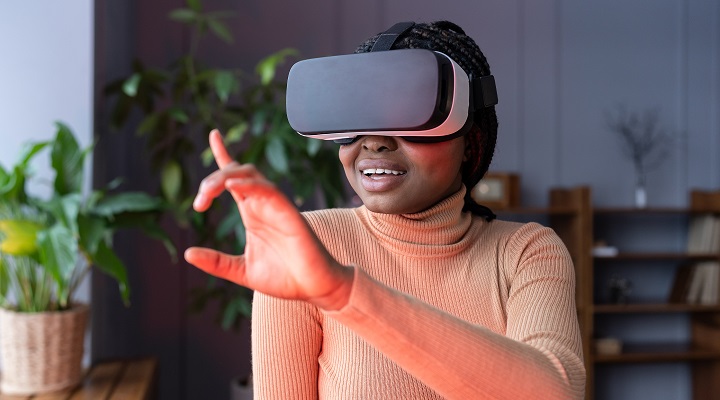The year is 2030. It’s been a decade since the pandemic, and the world has moved on. Society has adapted and we’ve empowered ourselves economically, professionally and with technology. Things are looking bright (and maybe there’s not a mask in sight). We’ve innovated, tested, learnt, and reflected – and ultimately concluded that the future is human. We now live in a world where relationships between technology and people are much healthier, making our lives more fulfilling rather than
overwhelming.
To reach this vision, the shape of the market, society, and our environment will go through several key shifts. This is where we see it heading, and what a connected omnichannel customer experience (CX) needs to account for in the behaviours and needs of customers adapting to their environment.
1. A reshaping population
The global population is forecast to reach 8.5 billion by 2030, with Australia passing 30 million by 2029. People will be living longer and working longer, and the gig economy will continue to thrive. This will lead to an increased focus on adaptive learning and securing our futures. Young people will be hyper-connected, increasingly sharing values and common goals such as distributed wealth. Longer lives, along with rising obesity rates, will lead to a rise in healthcare and health-related spending, which may erode spending power elsewhere.
Retailers are also being encouraged to play a bigger role in supporting healthy ageing, with ‘retail therapy’ – frequent shopping – correlating with longer lives. The International Longevity Centre notes that “retailers could thrive, not just survive, if they innovate to adapt to more older consumers”.
2. Connected sustainability
In future, smart cities will leverage cloud, mobile, data, and social networks to automate and improve everything from energy distribution to rubbish collection. The Internet of Things (IoT) will provide retailers with critical, real-time data, optimising everything from in-store experiences to delivery logistics. Retailers will be able to gather data about people surrounding and entering their premises, including demographics, and dynamically adjust in-store signage and promotions to maximise conversion rates.
Sustainability for people is going to shift from being a grand mission statement, to something on which we are individually measured. What could that look like? By prioritising climate-friendly decisions in our behaviours and spending, we will get a personal sustainability score, similar to today’s credit score or Uber rating. Retail brands could then grant variable discounts and rates, rewarding consumers for the right behaviour.
3. Data management meets emotional intelligence
Earning customer trust will be a minimum expectation. People will be aware of the value of their personal data and consumer data rights will be an embedded safeguard. Customers will be in complete control of how their data is used and be able to manage and monetise it as a source of income or even feed it back into their spending and loyalty programs. Servion predicts that by 2025, artificial intelligence (AI) will power 95 per cent of all customer interactions.
4. Adaptive interfaces
The future of mobile will be multi-modal. True mobility, powered by AI and machine learning, will require three-dimensional interaction models. These will evolve from dual sense to all five senses. The ‘Internet of Senses’ will enable a digital experience for all five senses – including smell and taste – for consumers, with haptics extending to 3D touch in practical applications spanning eating to dating to shopping.
As we start to see people move away from using a touch screen, smartphones will evolve and exist as the brain and hub for communicating seamlessly with other natural and contextual interfaces around us. Bond Brand Loyalty’s 2018 Loyalty Report states that 95 per cent of consumers want to engage with their loyalty program using emerging technology such as chatbots, AI, virtual reality (VR) and smart devices.
Using adaptive interfaces, people will increase their inputs and interaction through voice, gestural motion, VR, AR and connected IoT devices – and eventually even our thoughts. Machines will recognise us from the way we walk, the way we talk and even the way we take devices out of our pocket This will provide a quick and secure way to access private data and personalised services.
5. Web 3.0
In the world of tomorrow, control of the internet will be taken away from big tech and become more collaborative, open source, and trusted as it builds upon the backbone of blockchain smart contracts. This redistribution will completely change power structures and the retail and payments products and services that sit on top of them – ultimately distributing ownership to individual users.
6. Merged reality
On the flip side, the metaverse will offer a parallel world that people can escape to. It will be the 3D experience layer of the internet, a completely functional economy powered by cryptocurrency. In the metaverse, people’s avatars will connect with friends, buy and trade things they desire and need – including with digital assets such as NFT artwork – and take virtual trips to digital locations without ever leaving home. Amazon’s Amazon Explore venture enables people to “travel the world, virtually”. France’s Moya Land is a virtual tourism realm including a tourist office, museums, an airport and a historical centre.
As Peter Drucker has said, the best way to predict the future is to create it. The retail industry is in a great place to do exactly that. Although the metaverse might sound like a game, we are already on our way to the blending of our physical world with the virtual world in ways more meaningful than campaigns and activations.
There will be a continual shift in how we evolve to interact with technology that sounds revolutionary – but it will very much be evolutionary and is already happening. This is the context in which Gen Z will live, and these are the spaces retail brands need to address and harness as they think about omnichannel experience extending to these realities over the next decade.

